Tiny houses have become a trend in certain parts of the world. But mankind has nothing to brag about. God thought up tiny houses long before they became a fad. Many birds and insects use tiny houses to make their summer living quarters. Often, we don’t see them because of the leaf cover or because their tiny structures are camouflaged in other ways.
One of my favorite discoveries is to find a new tiny house on my walk. Little bugs make cocoons around themselves and then settle in for a nap. We are all familiar with the penchant for the monarch butterfly caterpillar to build its cocoon on milkweed plants. Unless we are fortunate enough to be where we can watch this miracle happen, sometimes all we see is the vacated cocoon or the resulting butterfly. Many children’s books have been written about an ugly caterpillar emerging from its cocoon as a lovely butterfly and the lessons it portrays about not judging people by their appearance.
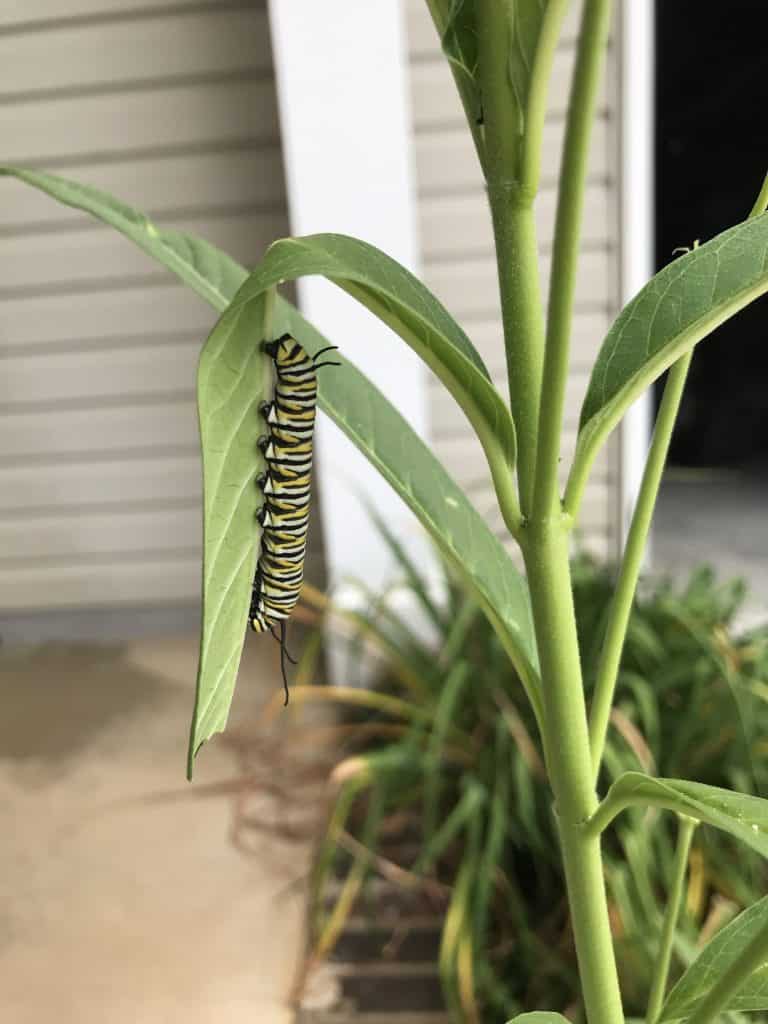

One day as I was looking at the different types of bark formations, I found what has become my favorite tiny house wedged in between the bark ridges. It reminded me of a papoose. I’m still wondering what insect made it.
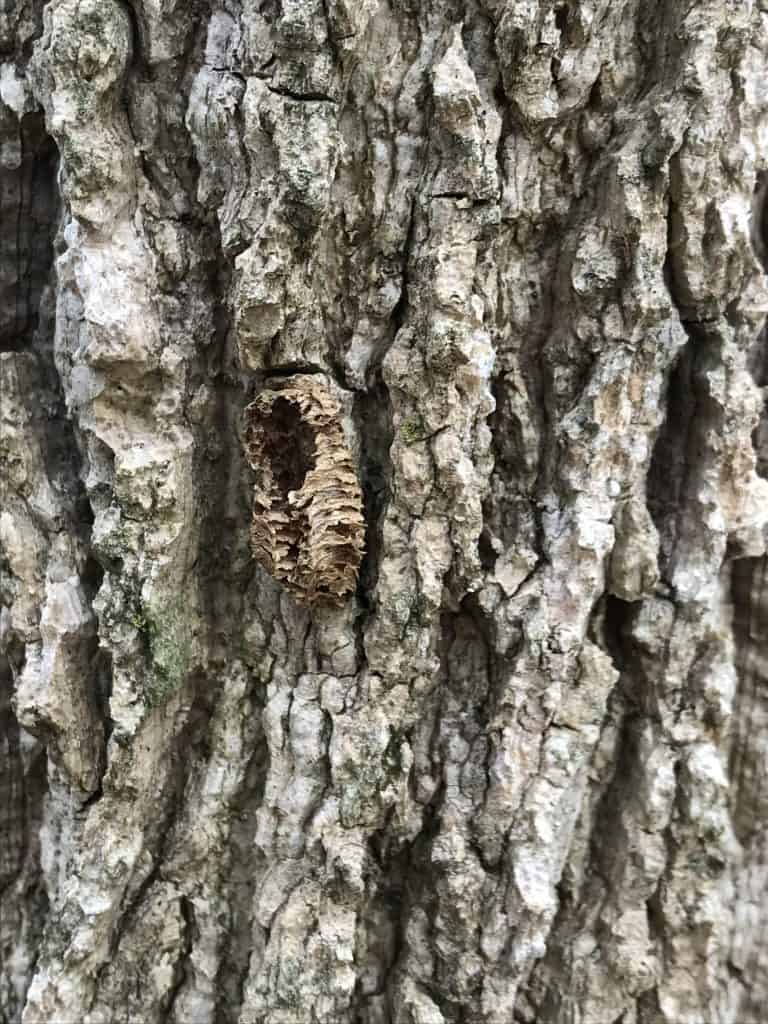
Another time while I was wandering in the woods looking at a lichen, I happened upon a little oval cocoon that had obviously been there all winter but had at one time been home to some creature. Like the tensile strength of the spider webs, this cocoon had held onto its branch even in the pelting winter downpours and high winds. Amazing.
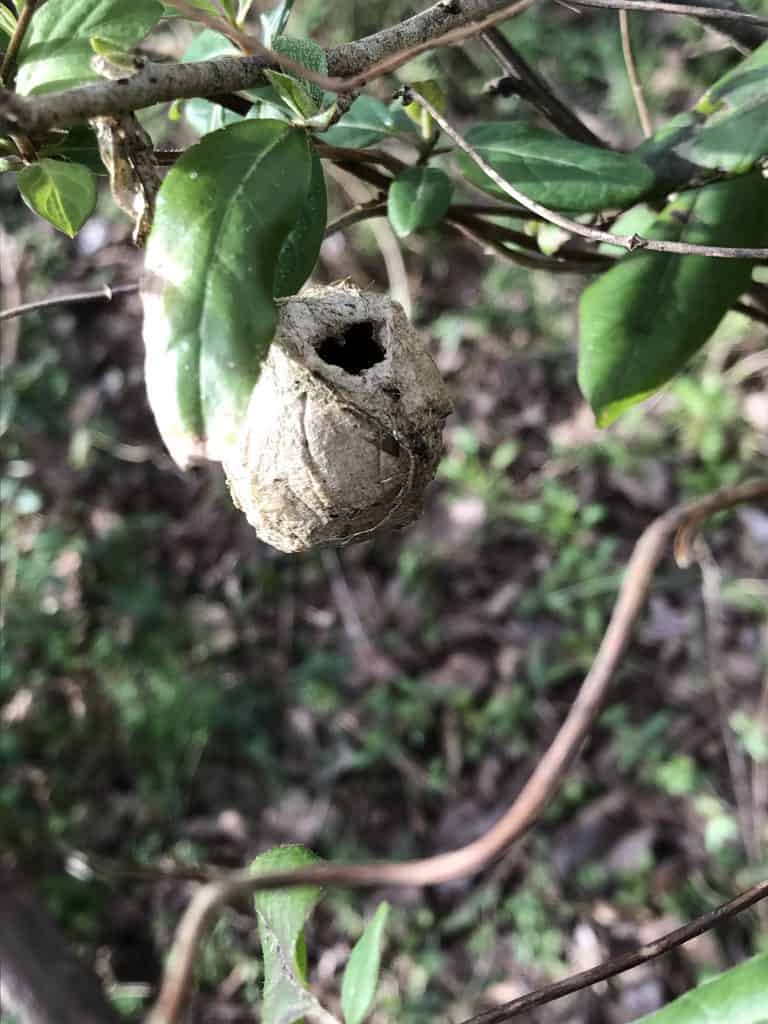
Other times I’ll find that there’s an insect nest that uses a leaf to camouflage its metamorphosis.

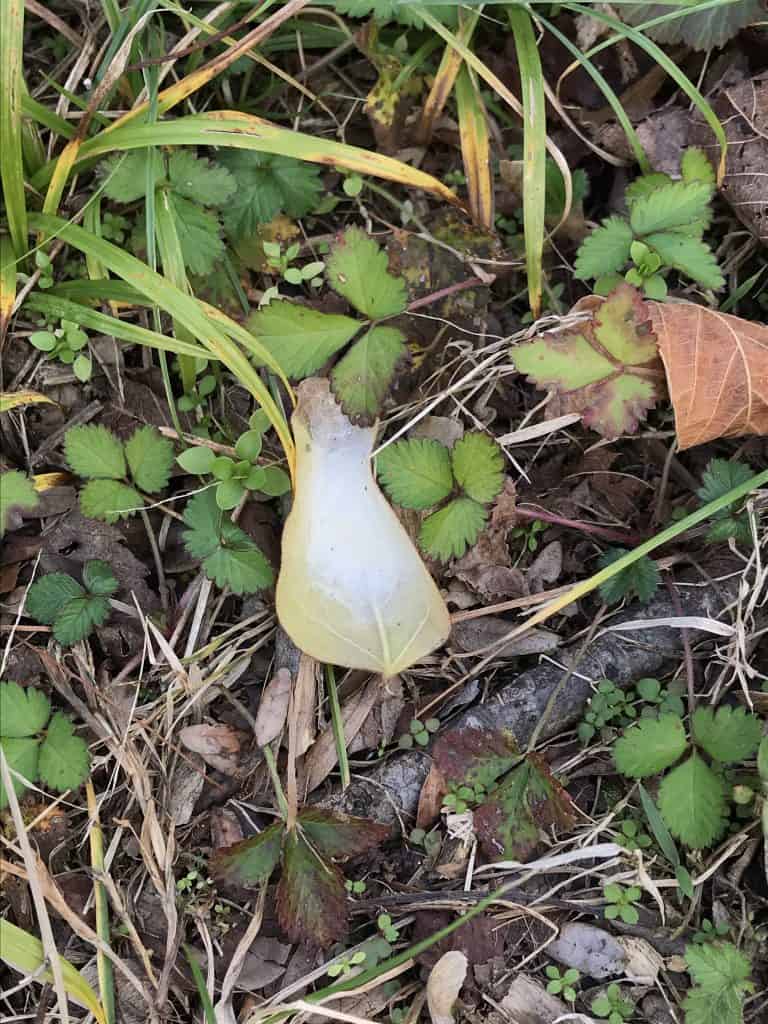
And still others are great hollows in the trees where I imagine a bird would find shelter from the rain and wind. I continually marvel at the combination of materials birds use to fashion their nests. In addition to sticks, they use mud (robins) and lichens (gnatcatchers) paper, cloth, seedpods and even spiderwebs. And on and on it goes.
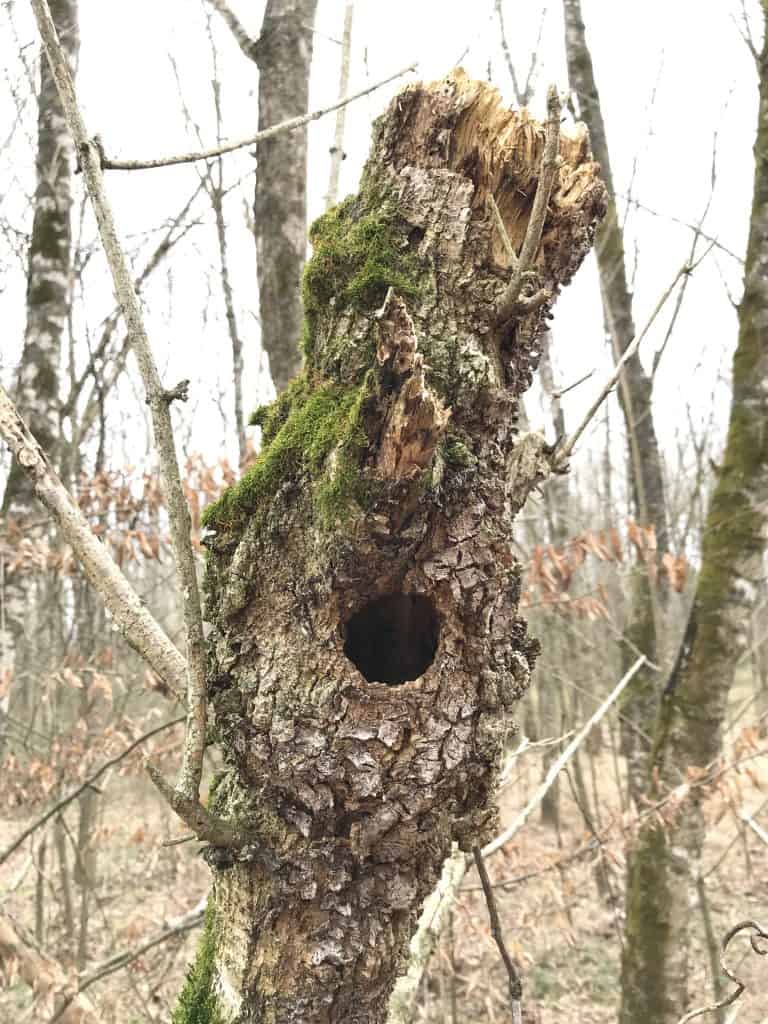
In the early spring, we begin to see the crawdads leave their winter hibernation spots making wonderful mud castles in the ground.
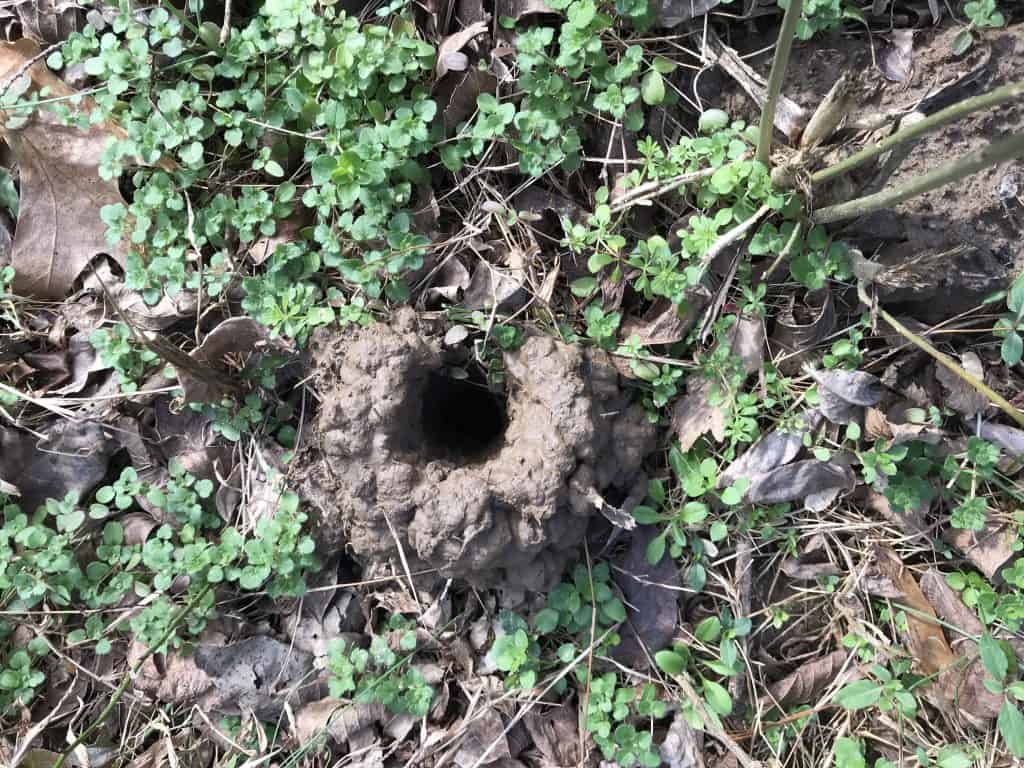
And then there is this fancy hole of a snake or some creature that is all decked out in mossy finery!
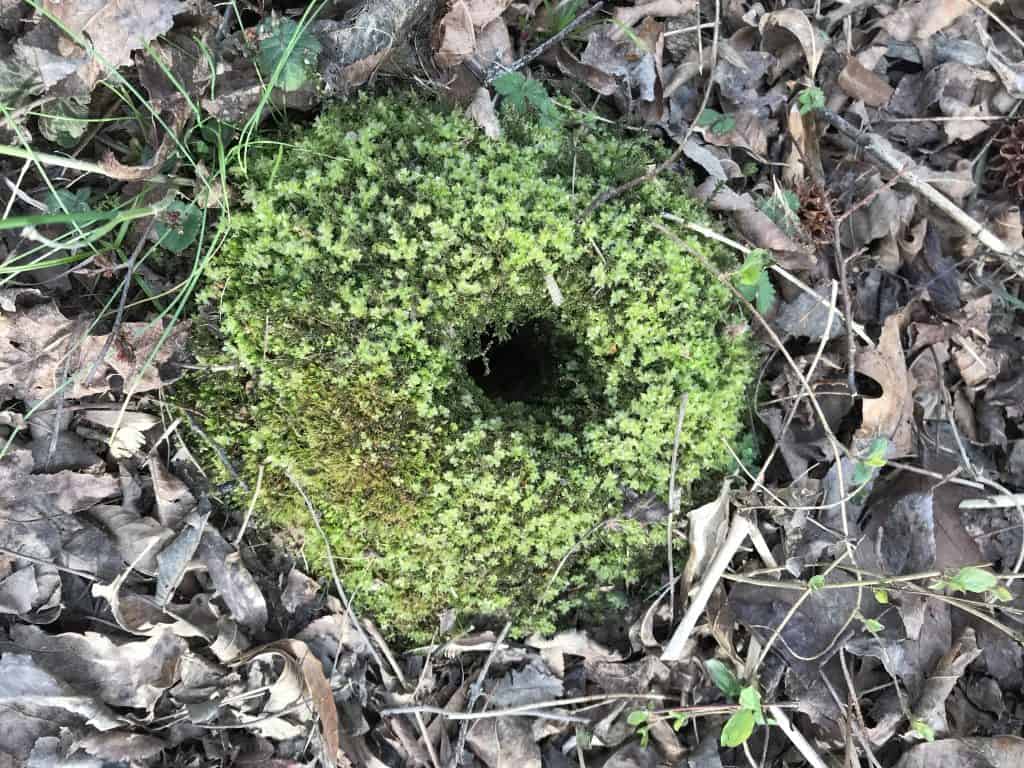
Whatever the case, there is an aura of mystery about finding these houses, mostly because I don’t know enough about who occupied them. But when I think of how the Lord programmed into His many creatures the capability of making such cocoons and nests I am again in awe of His creativity, artistry and imagination.
“How many are your works, Lord! In wisdom you made them all; the earth is full of your creatures.”
Psalm 104:24 NIV
